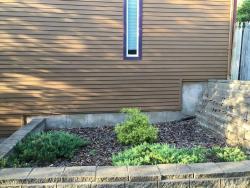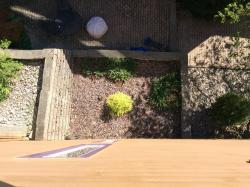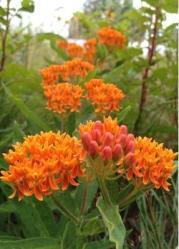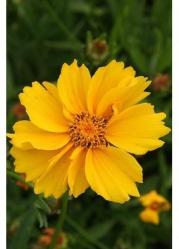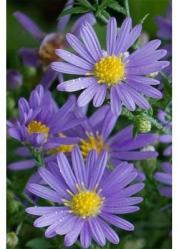No way! I'm sure I'll have total success with my first attempt. <note sarcasm!>
Of course I'll water the plants when they are new. I prefer to grow all of my plants from seed.
There actually is a faucet right next to this area so watering really shouldn't be a problem...now that I think about it. Still, I like the appeal of plants that can take care of themselves for the most part.
Do you all have a copy of the book "Taming Wildflowers" by Miriam Goldberger? If not, I recommend it. In this book she makes the case that everyone's fancy landscaping and exotic flowers (and the lack of wildflowers) is causing a major crisis in the ecosystem, especially for Wasps, Beetles, Butterflies, Birds and Bats. We're not planting the types of plants that the native animals need. Additionally, she says it's a waste of resources to buy plants that need constant watering and fertilizer. Instead, she argues, we should just get plants that are native to our area (North America)...and there are plenty of good choices, which she covers in the rest of the book. These plants will both thrive on low maintenance and will help the ecosystem. None of the other 10 plant books I've read have said stuff like this - they mostly seem to emphasize all of the available hybrids.
How low is low maintenance? Miriam says she only spends 1 hour per year. That is comprised of "20 minutes cutting down dead stems and 40 minutes of occasional weeding throughout the year". She then recommends spending another 20 minutes per year burning spent stems and using the ashes as fertilizer.
So, please tell me if you think she is crazy. If not, I think I'm going to use 4 flowers from her book:
1) butterfly weed - orange
2) lance leaf sand coreopsis - yellow
3) bergamot/bee balm - lavender
4) prairie Blazingstar - purple/pink
I think this will be a good combination of colors and low maintenance plants. They are all drought resistant and attract butterflies. I'm just going to buy the seeds and start from scratch.
Final question: given that it's July, do you think I should buy the seeds now and try to get the plants going before winter, or just plan to grow them indoors over the winter and plant them in the spring?
(Also, I attached another picture. This is the ground view of the area)
